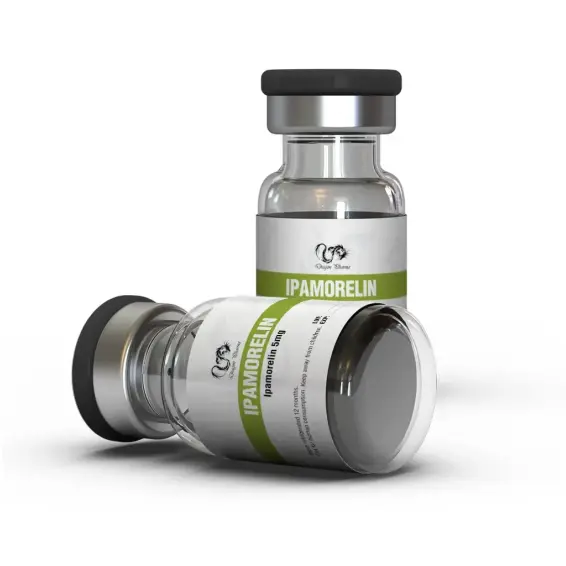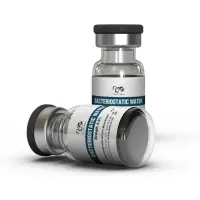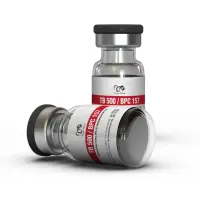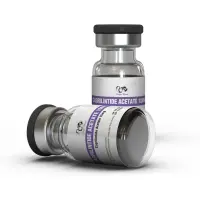- Manufacturer: Dragon Pharma
- Substance: Ipamorelin
- Dosage: 5 mg
- Form:Injection
- Packing: vial
- Brand Name: Ipamorelin
Shipping From
Ipamorelin 5 mg by Dragon Pharma contains Ipamorelin, a synthetic growth hormone-releasing peptide (GHRP) known for its selective stimulation of growth hormone (GH) secretion. Each vial provides 5 mg of lyophilized powder for injection, promoting muscle recovery, fat loss, and enhanced performance without significant side effects. With a half-life of approximately 2–3 hours, Ipamorelin delivers targeted GH pulses, making it a top choice for bodybuilders and athletes seeking a lean, strong physique.
What It Is
Ipamorelin is a pentapeptide in the GHRP family, designed to stimulate the pituitary gland to release growth hormone while minimizing effects on cortisol or prolactin, unlike other GHRPs. In bodybuilding, it's used to enhance muscle growth, recovery, and fat metabolism, offering a safer alternative to direct GH administration. It's also studied for anti-aging, joint health, and overall vitality due to its clean GH release profile.
How It Works
Ipamorelin binds to ghrelin receptors (GHS-R1a), triggering the release of growth hormone from the pituitary gland. This increases insulin-like growth factor-1 (IGF-1) levels, promoting protein synthesis, muscle repair, and fat oxidation. Its selective action avoids significant spikes in cortisol or prolactin, reducing side effects. Ipamorelin's short half-life allows for multiple daily doses, delivering consistent GH pulses to support muscle growth and recovery.
Ipamorelin Benefits
- Muscle Recovery: Speeds up repair of muscle tissue post-workout.
- Lean Muscle Gains: Enhances protein synthesis for quality muscle growth.
- Fat Loss: Promotes fat metabolism for a leaner physique.
- Joint Health: Supports connective tissue repair and flexibility.
- Anti-Aging: Improves vitality, skin elasticity, and energy via GH release.
Who It's For
Ipamorelin 5 mg is ideal for male and female bodybuilders aged 21–40 seeking muscle recovery, lean muscle gains, and fat loss in bulking or cutting cycles. It's suitable for beginners and advanced users due to its mild profile. Not for: Individuals under 21, those with pituitary or thyroid disorders, or those not under medical supervision. Blood work to monitor GH and IGF-1 levels is recommended.
How to Use
Dosage: Typical dosage is 100–300 mcg/day, split into 1–2 subcutaneous injections (e.g., 50–150 mcg per dose). Beginners should start at 100 mcg/day to assess tolerance. Women may use similar doses but start lower (50–100 mcg/day).
Administration: Reconstitute the 5 mg vial with 2–3 ml bacteriostatic water. Draw 0.02–0.06 ml (100–300 mcg) into a 0.5-inch insulin syringe (27–30G) and inject subcutaneously (e.g., abdomen, thigh) on an empty stomach, ideally morning and post-workout or before bed. Cycles typically last 8–12 weeks, followed by a 4–6 week break to prevent receptor desensitization.
Results Timeline: Improved recovery and energy are noticeable within 1–2 weeks, with lean muscle gains and fat loss by 4–8 weeks when paired with a high-protein diet and training.
Stacking Suggestions
Ipamorelin is versatile for stacking:
- Muscle Growth Stack: Combine with CJC-1295 (100–200 mcg/day) for amplified GH release and muscle gains.
- Cutting Stack: Pair with Cardarine (10–20 mg/day) for enhanced fat loss and endurance.
- Support: Use with BPC-157 (250–500 mcg/day) for synergistic tissue repair and recovery.
Side Effects
Ipamorelin is well-tolerated with minimal side effects, but may cause:
- Injection Site Reactions: Mild redness or irritation; rotate sites.
- Headaches: Rare, dose-dependent; reduce dosage if persistent.
- Hunger: Mild, due to ghrelin receptor stimulation.
- Water Retention: Temporary, linked to GH release; adjust dosage if occurs.
Monitor GH and IGF-1 levels with blood work. Avoid overuse to prevent receptor desensitization.
Post Cycle Therapy (PCT)
Ipamorelin does not suppress testosterone, so PCT is not required unless stacked with anabolic steroids. If stacked with suppressive compounds, use Clomid (50 mg/day) and Nolvadex (20–40 mg/day) for 4–6 weeks post-cycle. Take a 4–6 week break between Ipamorelin cycles to maintain efficacy.
Frequently Asked Questions
What is Ipamorelin?
Ipamorelin is a growth hormone-releasing peptide (GHRP) that selectively stimulates growth hormone secretion, promoting muscle recovery, fat loss, and performance enhancement in bodybuilding and anti-aging protocols.
What is Ipamorelin for men?
For men, Ipamorelin enhances muscle growth, accelerates recovery, promotes fat loss, and improves energy and vitality, making it ideal for bodybuilders and athletes seeking a lean, strong physique without significant side effects.
Is Ipamorelin better than HGH?
Ipamorelin stimulates natural GH release with fewer side effects and lower cost than HGH, but HGH provides broader systemic effects. Ipamorelin is better for targeted recovery and mild cycles, while HGH is more potent for overall growth. Choice depends on goals and budget.
Does Ipamorelin affect testosterone?
Ipamorelin does not directly affect testosterone levels or the hypothalamic-pituitary-gonadal axis. It supports anabolic processes that may enhance testosterone's effects indirectly through improved muscle growth and recovery.
Is Ipamorelin good for bodybuilding?
Yes, Ipamorelin is excellent for bodybuilding, promoting lean muscle gains, faster recovery, fat loss, and joint health with minimal side effects, making it ideal for both bulking and cutting cycles.





